ホーム > 教育・文化・スポーツ > 文化・芸術 > Sapporo Media Arts Online Talk 2021(2021年2月15日、16日開催) > Report - Sapporo Media Arts Online Talk 2021 “A Virtual Path between Ko?ice and Sapporo” (15 Feb. 2021)
Main content starts here.
Update:January 5, 2023
Report - Sapporo Media Arts Online Talk 2021 “A Virtual Path between Košice and Sapporo” (15 Feb. 2021)
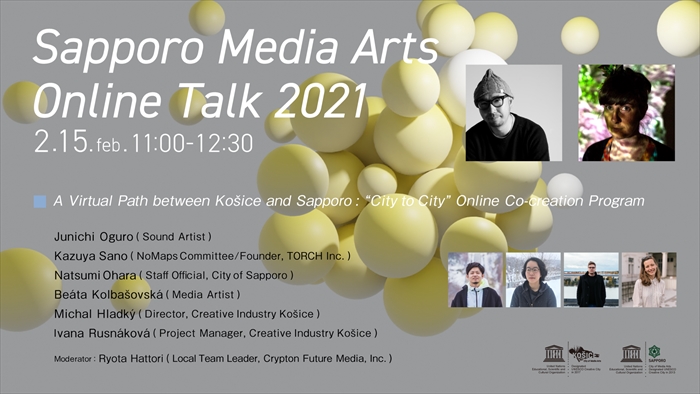
Outline
- Date: 15 Feb. 2021 19h00-20h30 (JST) , 11h00-12h30 (CET)
- Venue: Online, Zoom webinar
- Speakers:
- Junichi Oguro, Sound Artist
- Kazuya Sano, NoMaps Committee / Founder, TORCH Inc.
- Natsumi Ohara, Staff Official, City of Sapporo
- Beáta Kolbašovská, Media Artist
- Michal Hladký, Director, Creative Industry Košice
- Ivana Rusnáková, Project manager, Creative Industry Košice
- Moderator: Ryota Hattori, Local Team leader, Crypton Future Media, Inc.
The year 2021 has begun while restrictions on various activities such as travel between countries are still being enforced in response to the Covid-19 outbreak. In the field of art, opportunities for creating and showcasing artworks were lost, and producing art the way we used to became a challenge. In such a situation, could artists build new connections with potential partners across the globe, and pursue international activities? What kind of support would they require in doing so?
On the 1st day of the Sapporo Media Arts Online Talk 2021, Sapporo (Japan) and Košice (Slovakia) discussed a jointly-led initiative under the theme “A Virtual Path between Košice and Sapporo.”
Sapporo and Košice participated in the Co-Creation Program “City to City 2020” in collaboration with seven other Cities of Media Arts from the UNESCO Creative Cities Network. In September 2020, each city launched a call for participant artists toward the launch of “City to City 2020”. Sound artist Junichi Oguro from Sapporo and media artist Beáta Kolbašovská from Košice participated in the program.The two artists collaborated in the creation of the work “Reminiscence Path” which is a digital art piece combining 3D animation and binaural sound.
The online talk welcomed the participant artists along with people who have contributed to the program or work in the field of media arts around Sapporo and Košice. To begin, the two artists shared about their creative process and the thoughts they put into the collaborative work “Reminiscence Path.” Then, during a cross-talk session, all speakers looked back on the program implementation from the perspectives of creators and supporting entities.
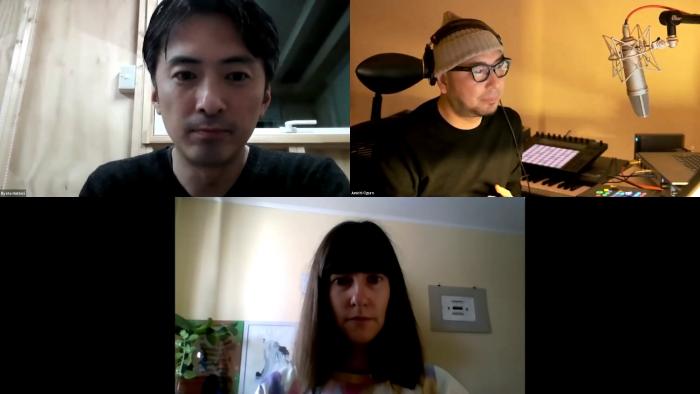
Junichi Oguro is a sound artist based in Sapporo. In 2006, he turned independent and traveled across Europe. He has produced music for commercials around the world. Currently, he is the sound producer of a commercial facility and creates sound installation in contemporary art. In a way, it can be said that his activities widen the realm of music.
In 2017, Junichi Oguro pursued creation and research activities in the 3D sound lab of the ZKM Center for Art and Media in Karlsruhe (Germany). This led him to produce “TENKU” at the Konica Minolta Planetarium the following year. From the 27th of February 2021, he exhibits one of his sound installations at the Sapporo Art Museum’s exhibition “AFTER DARK” inside Sapporo Art Park.
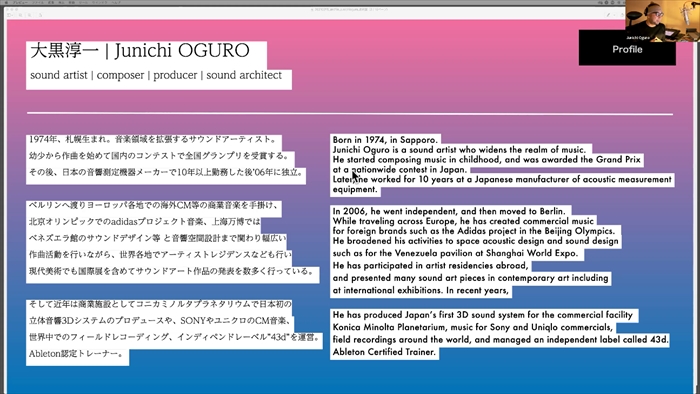
Beáta Kolbašovská is a media artist from Slovakia living in Košice. She has been working on site-specific installations, and real-time audiovisual performances. As the co-founder of Nano vjs, she has produced experimental live performances in collaboration with contemporary dancers and performers around the globe.
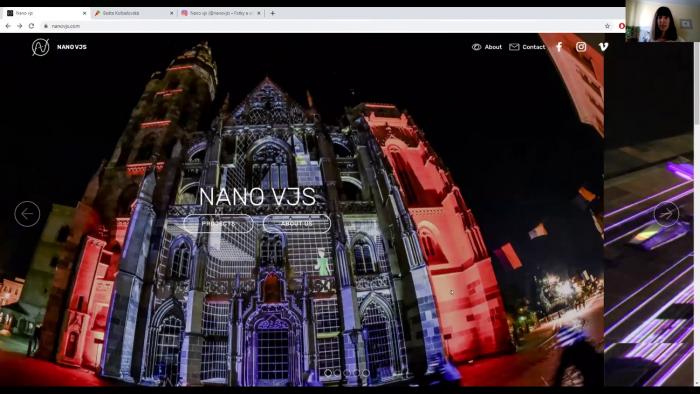
Q. What message conveys your artwork?
Junichi Oguro: The concept of “Reminiscence Path” is to collect memories of the global Covid-19 pandemic, and reflect on how we will look back on them in the future.
Beáta Kolbašovská: My first thought was to look ahead, and see how human connection was being affected by travel restrictions and distance. So, I started thinking about long walks and paths in nature, and how to connect them with digital technology. This reminiscence path connects parts of the world, bridging the distance between Košice and Sapporo, so that people can experience a sense of togetherness even if they are alone or isolated.
Q. What about the sound composition?
Junichi Oguro: I adjusted the sound movements of my field recordings to the movements captured by the GPS data. When in a virtual space sound moves the same way as it does in real life, we experience reminiscent memories from our past walks.
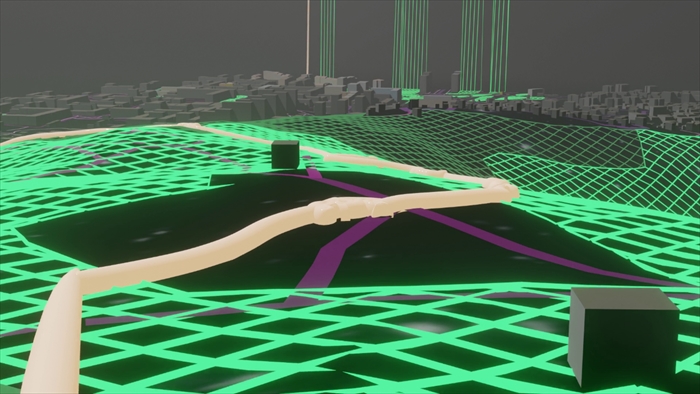
“Reminiscence Path” by Beáta Kolbašovská & Junichi Oguro
This work was created as “a symbol of overcoming virtual distances by visualizing with audiovisual data the experience of people during the Covid-19 pandemic.” The 3D space and the lines appearing in our work are generated from the GPS data of walking and cycling people we kept track of with topographic maps and apps. We reflect on where people have been and rested their minds during lockdowns.
After the introduction from the artists, we invited the people who made this artistic exchange possible.
Michal Hladký, Director of Creative Industry Košice (CIKE), told us about the activities of the non-profit organization which are focused on the support and development of the cultural and creative industry in Košice.
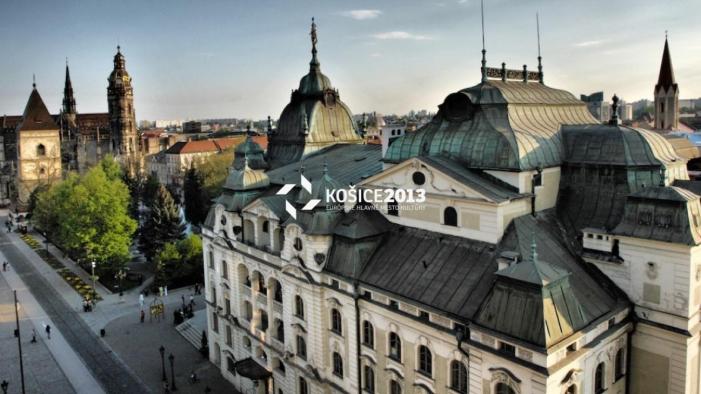
After being selected as the European Capital of Culture in 2013, Košice considered joining the UNESCO Creative Cities Network (UCCN). Since digital technologies had significantly developed over the last 10 years, and Košice had become the biggest cluster of IT companies in Slovakia, the city decided to apply to become a UCCN City of Media Arts.
Since 2016, CIKE has been the organizer of “Art & Tech Days'' festival which welcomes experts and artists from around the world to talk about the arts, technologies and digital culture. The festival also promotes exchange programs with other cities and events sharing the common idea that creative and digital fields can enrich our cities.
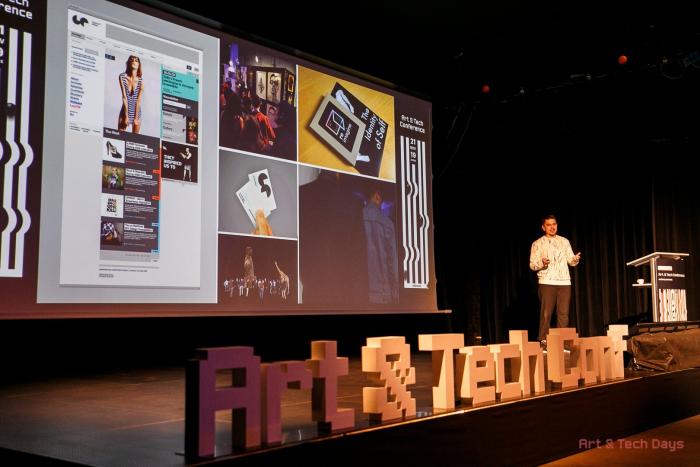
Following, Natsumi Ohara, who is working on projects related to the UNESCO Creative Cities Network at the Cultural Promotion Department of the City of Sapporo, delivered a presentation on the cultural measures undertaken by the city of Sapporo.
After creating the Sapporo Ideas City Declaration in 2006, Sapporo developed measures to promote cultural and artistic activities while taking advantage of public spaces such as the Sapporo Ekimae-dori Underground Walkway opened in 2011. This led the city to become a member of the UNESCO Creative Cities Network in 2013. Natsumi Ohara presented various initiatives including the triennial Sapporo International Art Festival (SIAF), the SIAF Lab which is active all year round, and the Creative Convention No Maps.
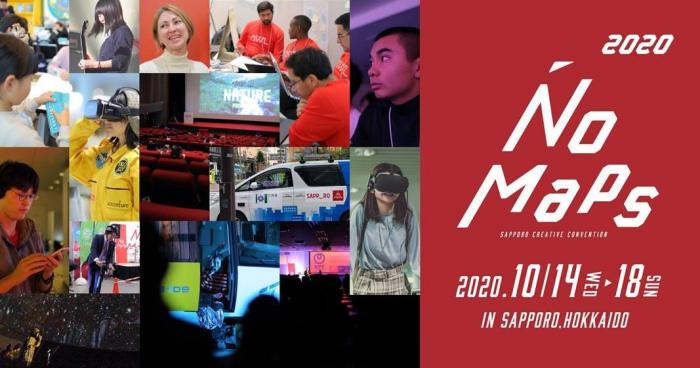
She also introduced the new initiative “++A&T (Pula-pulatto)” which takes place at the Sapporo Cultural Art Community Center (SCARTS) newly opened in 2018. This series of workshops is mainly aimed at high school students. Artists and researchers together with the teenagers create a ‘space for collaboration’ under a theme related to art and technology.
In the second part, we conducted a cross-talk session with Ivana Rusnáková, Project Manager at CIKE, and Kazuya Sano, No Maps Committee / Founder of TORCH Inc. in addition to previous speakers.
Q. The program “City to City 2020” took place during the Covid-19 pandemic. What changes did you experience in the process and significance of your creative activities after the outbreak?
Junichi Oguro: I have worked in many countries to this day, but this time I had to come up with new ideas to create my part of the work. It used to be a given that I could meet in person for a collaboration, and it was important for me to meet in person. But now that it has become near impossible, although I didn’t change my approach, I had to find ways to pursue creation online.
Beáta Kolbašovská: My artworks need to have an audience, and the venues are important since most of them are site-specific. Because now everything happens online, my participation in the City to City 2020 project was very important to me. For the moment, I am doing rehearsals in an empty theater for my future performance, and wait for the audience to come back.
Both artists hold on to the same spirit toward creation despite changing of process. They completed their collaborative work through trial and error.
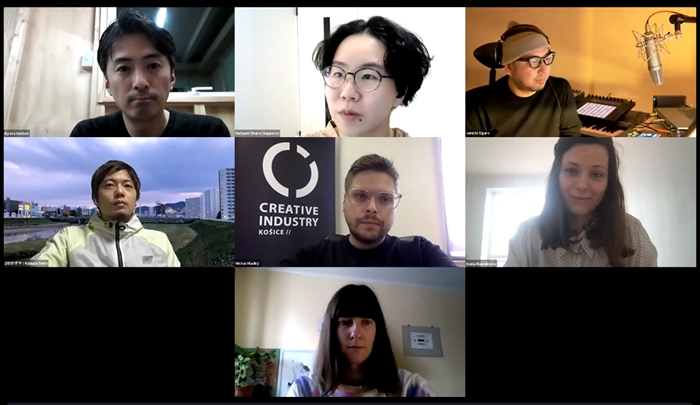
Q. From the perspective of supporting entities, what did you pay attention to in order to ensure the project’s success?
Natsumi Ohara: Junichi and Beáta are very professional, so we didn’t really need to do much for them to make progress. In the future, it would be good to develop a springboard program for people without much international experience too.
Ivana Rusnáková: I was concerned about the 8 hour time difference between Sapporo and Košice. But the artists managed very well! Košice is part of the working group planning the next edition “City to City 2021”, and we are really looking forward to our continued intercity collaboration.
Kazuya Sano: Košice is a smaller city than Sapporo, so I am impressed by the various projects led by the city. It feels like CIKE is involved in many more projects for research & development. It would be interesting to incorporate some of these initiatives in Sapporo. I believe we can inspire each other through exchanges.
Michal Hladký: Sapporo and Košice initiatives are different but complementary. I believe we could take advantage of each other's experiences. We both have festivals and artistic residencies so we could easily develop common programs. I can also see interesting exchanges on the level of education and universities. I hope we can meet in person in the near future.
Speakers discussed cultural measures of each city, and the Co-Creation Program “City to City 2020” implemented during the Covid-19 pandemic. Despite the current challenges, the two cities leveraged the existing connections between cities and artists to successfully launch the Co-Creation Program “City to City 2020”. This initiative provided artists with the opportunity to experiment a new kind of art creation, and marked an important turning point in the way institutions provide support to artists. We look forward to future developments including through intercity collaborations.
Copyright © City of Sapporo All rights Reserved.




